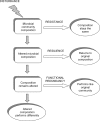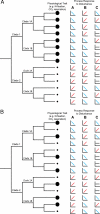Colloquium paper: resistance, resilience, and redundancy in microbial communities
- PMID: 18695234
- PMCID: PMC2556421
- DOI: 10.1073/pnas.0801925105
Colloquium paper: resistance, resilience, and redundancy in microbial communities
Abstract
Although it is generally accepted that plant community composition is key for predicting rates of ecosystem processes in the face of global change, microbial community composition is often ignored in ecosystem modeling. To address this issue, we review recent experiments and assess whether microbial community composition is resistant, resilient, or functionally redundant in response to four different disturbances. We find that the composition of most microbial groups is sensitive and not immediately resilient to disturbance, regardless of taxonomic breadth of the group or the type of disturbance. Other studies demonstrate that changes in composition are often associated with changes in ecosystem process rates. Thus, changes in microbial communities due to disturbance may directly affect ecosystem processes. Based on these relationships, we propose a simple framework to incorporate microbial community composition into ecosystem process models. We conclude that this effort would benefit from more empirical data on the links among microbial phylogeny, physiological traits, and disturbance responses. These relationships will determine how readily microbial community composition can be used to predict the responses of ecosystem processes to global change.
Conflict of interest statement
The authors declare no conflict of interest.
Figures



References
-
- Ehrlich PR, Ehrlich AH. The value of biodiversity. Ambio. 1992;21:219–226.
-
- Daily GC. Nature's Services: Societal Dependence on Natural Ecosystems. Washington, DC: Island; 1997.
-
- Gans J, Wolinsky M, Dunbar J. Computational improvements reveal great bacterial diversity and high metal toxicity in soil. Science. 2005;309:1387–1390. - PubMed
-
- Torsvik V, Øvreås L. Microbial diversity and function in soil: From genes to ecosystems. Curr Opin Microbiol. 2002;5:240–245. - PubMed
Publication types
MeSH terms
LinkOut - more resources
Full Text Sources

